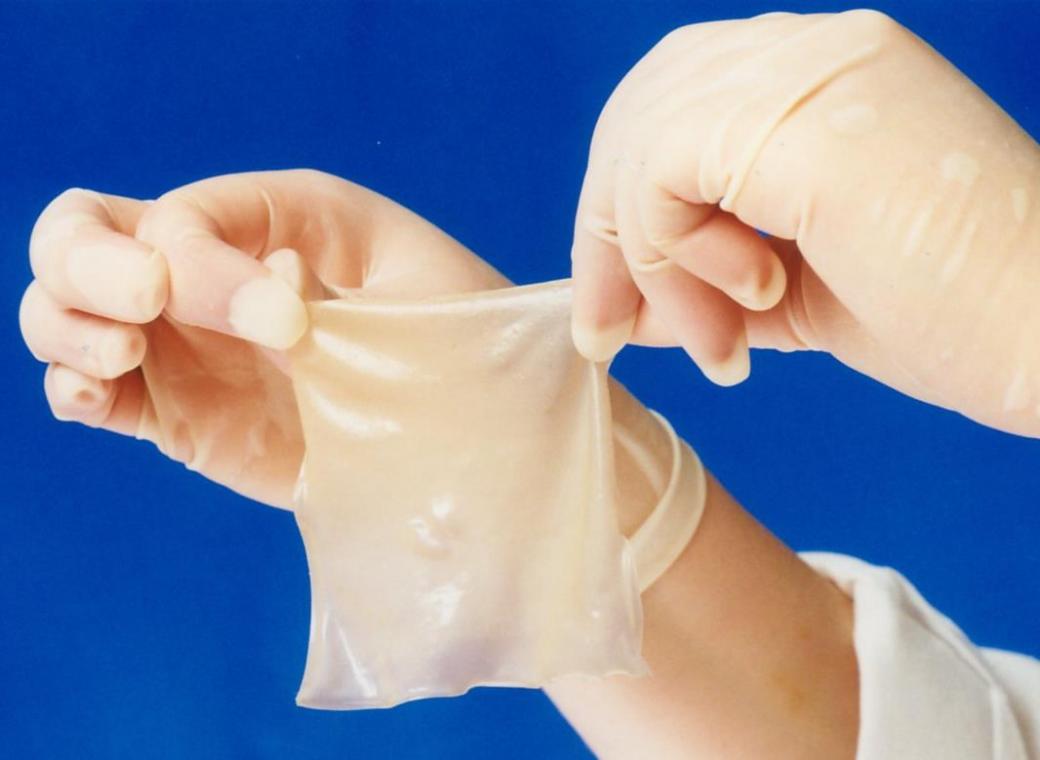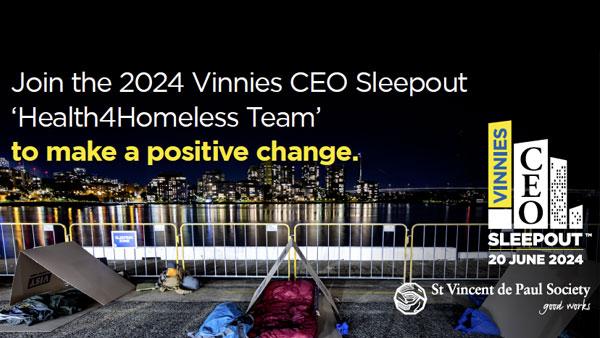
Interview with Professor Weiss
Professor Weiss is a rare blend of successful Australian academic researcher, innovator and company Scientific Founder of Elastagen Pty Ltd. He will be speaking at the next MedTech Forum: Australian MedTech Innovation - The Clinical Research Landscape on Thursday 11th May. He was interviewed by Amanda Ogilvie from the Australian Chamber of Commerce & Industry (ACCI) as part of the Biz Better Together initiative.
How did the idea of Elastagen begin?
It began when I realised we needed to have a vehicle to commercialise the innovations coming out of my lab. Universities are fine places to generate new ideas and contribute to society in many ways, but they are not necessarily the best place when it comes to commercialisation.
Elastagen is a Pty Ltd company that focuses on the commercialisation and applications of material discoveries from my lab to benefit people. It’s a healthcare focused company. The specific products revolve around the use of a material, ‘tropoelastin’, which is a protein that’s the building block used to make all biological elastic tissues, such as skin, blood vessels, tendons and ligaments.
Naturally occurring elastin is very hard to get hold of. It’s stable because elastin needs to stay intact - although you want your skin and any other flexible structures in your body to be able to move, they have to maintain integrity, so for example those blood vessels can’t fall apart when the blood moves through them – and it’s difficult to access the elastin built into these structures.
So the very first bit of technology coming out of my lab, was to invent the technology to make the individual building blocks for elastin. We found a natural way to make it without having to turn to less ethical sources such as animal or human tissues. We make a precise replica of the natural building blocks. We make this in large amounts. The practical applications are amazing and life-changing.
One example is treating a region of damaged skin. You can reintroduce the building blocks, the tropoelastin, and that can be used to repair the damage. The first product coming through is based on injection. We also have other products in the pipeline that are larger constructs that can be used to treat larger areas of damaged skin, such as burns or scarring.
Challenges of getting a medical device or application out of the lab
There are many challenges in this process. Technology translation from the university lab to the commercial market is one I’ve already mentioned, and forming Elastagen was the solution for that. There are some shining examples of researchers who successfully translate technology down the commercial path but there are so many people who, as academics, simply don’t know how to do it. So one of the first things challenge-wise is to obtain university support to help the process of taking it out the door. A second challenge is encouraging and enticing people, bringing in people who want to put funding in and really help establish a company. I’m very grateful for the assistance of Australia Technology Park who’ve been wonderful. The third challenge is bringing in the right people, the best team, to make sure you can progress down the commercialisation path.
Underneath all that, you absolutely need robust science. It has to be something that can withstand scrutiny and it has to be original and significant so that it generates substantial intellectual property.
Clinical trials and the regulatory environment
With any product intended for use in the treatment of health conditions there has to be a stage involving clinical trials before you can bring it to market. Universities again are not very good at initiating this process. We can conduct trials there, and at hospitals, but the drivers are the commercial companies.
Initially we did the first clinical trials here in Australia. Since that time we’ve conducted a series of clinical trials internationally. Clinical trials definitely add a layer of complication to bringing a product out. It would be so much easier to bring out another app that works digitally, but as soon as something has to interact with the human body, it encounters a very dense regulatory environment.
It’s a rollercoaster ride to generate any young company and bring it through to delivery of a successful product, but the ups and downs can be more extreme in this environment and the trip can last a lot longer. You can’t just invent the technology or the product and bring it out the next day. You do need to conduct clinical trials, you do need to demonstrate that it works well and that it’s a safe material. I like to see this as a partnership with the public; we generate something that benefits the public but the public has also contributed to this process, via funding of my lab. We have a responsibility to give something back to the community.
The regulatory environment sounds like a pain, and it is – but it’s a necessary pain. We want to be sure that what is brought out does indeed help people.
We have a very strict regulatory environment in Australia that is in many ways similar to what is done in the USA. There is a high bar to clear before regulatory acceptance, and that’s a good thing. It’s important to protect society. Some of it may have originally been driven in the USA by litigation, but ensuring safety and efficacy of anything we use on people is important. So I’m OK with the regulations.
Advice for young inventors, entrepreneurs and scientists
You need to have the robust science and it has to connect the dots to give the consumer a great end product. I’d encourage young entrepreneurs and inventors to get into commercialisation. Contributing something that meaningfully improves people’s lives is exciting and worthwhile. I’m excited by it and it’s a powerful driver because you can help people.
I say go for it. It’s a worthwhile journey. There will be both small and big bumps along the road but as long as you believe in the outcome and you do things carefully and robustly throughout, what a fantastic journey it will be.
People are critical to success
We talk a lot about the need for robust science, but the people that surround you are just as critical. If you’re a young scientist you need the right mentors. It’s an unknown journey ahead and you want to minimise mistakes and maximise your opportunities, and you want people who can introduce you to other key people.
The things we do best are done with really good people around us. Our company would not have progressed like it has without our wonderful CEO and smart people on the board. The investors have to be the right types of people, people who just ‘get it’. You can start small and build it up. I would always counsel anyone to find the right people to help them.
The need to be truly innovative
In our case we are fortunate that we have really strong dominance in the space. You don’t want anything that provides only a small benefit. It has to make a bigger impact to be commercially viable, and to make the lengthy, difficult journey worthwhile.
If your product or process only offers an incremental benefit, say 3% improvement, then you are vulnerable to the next person that comes along and can offer something with a 5% improvement that knocks yours off the top spot.
Once you start talking about commercialisation and taking something to market you really have to maintain that competitive edge to be economically viable. When you have a good product it’s inevitable that you will have imitators follow. If you are the leader in the field, others will come along; but if you have a hundred-fold lead rather than a five-fold lead, you have a better buffer.
The future of MedTech
I’m quite bullish about it. Australia has a nice history of generating a couple of big companies, for example, the cochlear and slepp apnea products. Australia has a good robust academic research system. I think we have a great future ahead but there are a number of things to be done to secure that future.
One, there has to be continuing and expanding funding in Australia to make things work well. The very foundation of medical technology is expensive. You have to keep on funding the wellsprings from where these discoveries are made, the universities, the CSIRO, the institues, you have to keep on funding companies as more and more these are involved in discoveries. Not enough of them yet, we still need more.
You have to nurture your base. There needs to be a continuing environment of funding and a regulatory framework that makes it possible for med-tech to continue; Australia already has fine researchers but they need to be nurtured or we’ll lose the bright ones.
We do need smarter management that can help drive these discoveries further forward. Finally, we need to have some really fine examples out there, the newer discoveries, and celebrate the successes so that others will continue to step in. We need to celebrate not just Aussie success but also the people who have tried and failed for the best of reasons and are now doing and redoing new work, who are not giving up.
It’s not a very Aussie thing, to shout about your achievements, but we need to do it; if you are working in that entrepreneurial space, you need to be able to shout to the rooftops that you have a great product that can help change people’s lives.
Give it time and we’ll get better at it. Because we have many wonderful success stories in med-tech to tell, and many more that are still unfolding.
It can be a long journey in med-tech and you need to be passionate about it, because passion not only sustains you, it’s contagious, and it inspires others. I’m still as excited by my career now as I was decades ago when I first started.
I sometimes marvel that the idea I first conceived with scribbles on a whiteboard has had such legs and has moved so far. It has now come to fruition as a life-changing product. I believe that if you have that belief, and that passion, you just have to have a crack at it.
